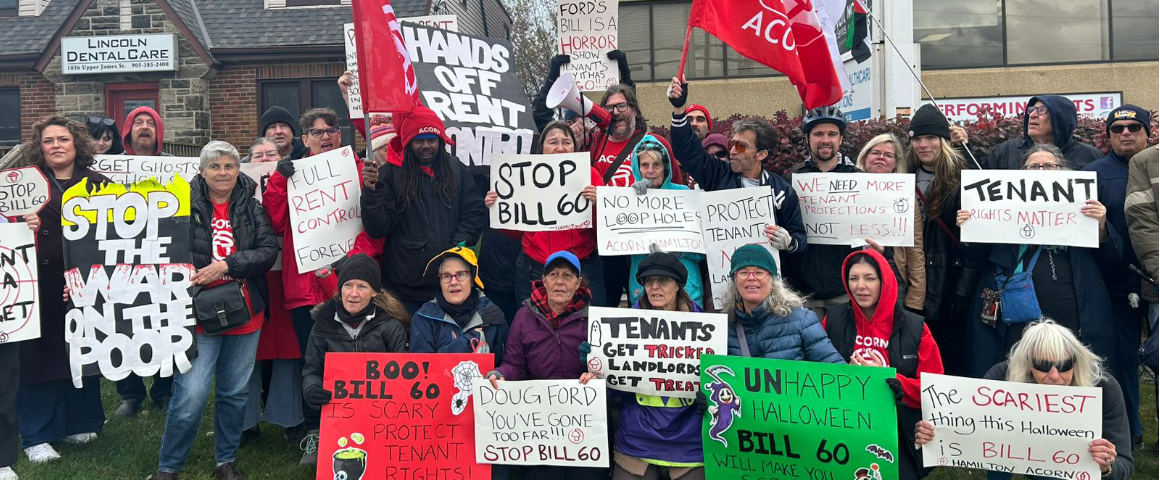By Kyle Fillo and Doug Yearwood
There is a tendency to see Canada’s current housing crisis as just another bubble, created by the boom-and-bust cycle inherent to capitalist production and economics. However, there are some long-term structural changes to Canada’s housing market which are fueling and exacerbating the current crisis. One of the key changes is the massively expanded role of real estate investment trusts (REITs).
REITs are companies that own, operate or finance income-generating real estate, functioning in a very similar way to mutual funds. Mutual funds are pools of capital that individuals invest in which are managed by professional financial managers. These pools are usually invested in a diverse portfolio of assets including stocks, bonds, etc. By pooling their money as such, individuals get access to professional financial management and the gains this management produces without having to invest directly in each of these assets. REITs use pooled money in the same way, but invest in real estate rather than stocks, bonds or other assets. In this way, investors can carve out their own slice of the landlord’s spoils without the need to buy, manage or finance individual properties on their own.
Canada only made REITs legal in 1993 and they settled into their current form by 1995. This timing is particularly interesting in light of other developments in Canada’s housing market at the time. The 1990s was also the period during which the Canada Mortgage and Housing Corporation (CMHC) underwent a crucial shift in its mandate. The CMHC was started right after World War II to find and create housing for veterans returning home after the war. Its major focus from the 1940s until the 1990s was building social housing and subsidized rental units for low-income families. From the 1940s to the 1970s, but declining throughout the 1980s and 1990s, a primary feature of much CMHC housing was that rent was geared to income rather than subject to market rates. This meant that rent was set at a percentage of the tenant’s income (typically 20-25 percent), so tenants only paid more rent if their income increased. Compare this to today’s rental market in which tenants are subjected to annual rent increases regardless of their financial situation and skyrocketing market rents are untethered from any consideration of affordability or human need.
The 1990s brought about accelerated financialization of the CMHC. Since the late 1970s, its mandate had been shifting from primarily building and supplying housing to Canadians to prioritizing access to home loans, creating incentives for private developers to build and federally backing private mortgages. In 1992, the National Housing Act was amended with two crucial changes: 1) individual mortgages could be pooled and sold to investors as mortgage-backed securities and 2) the federal government would guarantee payments for mortgage-backed securities. In 1996, budget legislation turned the CMHC into a more competitive commercially run operation. The CMHC’s stated purpose became “promoting housing affordability and choice to facilitate access to finance sources and to encourage competition and efficiency.” The logic was that by pooling funds and providing them federal security, lenders would have access to a lower cost source of funding and would ensure an adequate supply of mortgage funds.
What does all this have to do with REITs? Mortgages instantly became less risky investment options thanks to backing by the federal government at the exact time that REITs became legal investment vehicles in Canada. These changes put in place the material conditions that have driven the housing crisis.
As of February 2022, there are 39 REITs in Canada. The nine largest have a combined market cap of over $50 billion. These include market leader Canadian Apartment Properties (CAPREIT) ($9.5 billion, specializing in mid-tier and luxury residential apartments) and other major players with billion-dollar market caps like Starlight, Realstar and Hazelview. Currently, CAPREIT alone is offering rentals in 294 buildings in every major city across the country. This intense centralization of our housing market into a few extremely powerful REITs is the result of the conditions put in place in the 1990s, but also lays bare the philosophical shift in the housing market during these decades. The results of this process are revealed in the context of the present housing market. From 2016 to 2021, the ten biggest financialized landlords increased their housing stock by 20,000 units and now own more than 250,000 rental units across the country.
With mortgages more secure thanks to federal backing, banks became more risk tolerant when granting them. When American banks became more risk tolerant without federal backing, this led to the 2008 financial crisis. Millions of Americans defaulted on mortgages that they couldn’t afford which had been chopped up and packaged together as financial assets that became rot in the economy’s foundations. Their federal backing came post-crash in the form of Obama’s trillion-dollar Wall Street bailout. In Canada, the 2008 crisis wasn’t nearly as bad because the mortgages deemed risky in America simply weren’t in Canada thanks to the CMHC. The Canadian housing market came out of the 2008 financial crisis as an increasingly vital part of Canada’s economy and investors flocked to it.
REITs and other financialized landlords put profound pressure on Canada’s housing market. These companies have a fiduciary duty to their investors, which means they are legally required to prioritize profit over everything else. Housing was no longer an invaluable necessity for thriving families, cities and communities, but a valuable investment opportunity that people happen to live inside.
Rent and housing prices became tied to quarterly returns and speculation rather than people’s incomes. This is how we have ended up in the absurd position of simultaneous homelessness and empty homes. When real estate becomes an investment opportunity for REITs and other huge investors, it doesn’t matter whether anyone is living in the house or apartment. Additionally, if a tenant can’t afford the high rent necessary to keep REIT profit growth going, they no longer get access to a place to live.
This speculation has trickled down to individuals as well. Those able to afford multiple properties have eagerly taken to landlordism, hoovering up real estate at prices often twice as high as they were only a few years ago. For older homeowners, the ability to sell their home for ten times what they bought it for decades ago is often the only way to fund retirement, considering how pensions have been eroded and eliminated around the country.
Stopping and reversing the effects of the housing crisis means reining in the unrestrained speculation of REITs and finance capital in the housing market. Declining rates of profit and growth and a lack of profitable investment opportunities in the global capitalist economy leads to the hyper-commodification of existing industries like housing, wringing out all of the profit that can be made from them.
In Ontario, the Communist Party is pressing for a “People’s Housing Policy” in a province-wide campaign that began prior to the provincial election and is continuing. Two specific aspects of this campaign address the issues of financialization and centralization in the housing market. First is the proposal to immediately build 200,000 rent-geared-to-income social housing units, 550,000 affordable housing units and 15,000 transitional housing units (to support people leaving situations of domestic violence, incarceration, homelessness or shelters) and to maintain those increased levels of affordable housing based on need. This is a mechanism for alleviating the endless market pressure that massive pools of capital like REITs are putting on the Canadian housing market. Enacting this policy would safeguard large fractions of the housing market from ceaseless financialization, making space for homes and communities to grow rather than empty investment opportunities. Second is the proposal to develop expropriation policies, particularly aimed at large private landlords who own significant numbers of units, as one tool among others for confronting the housing crisis and building up Ontario’s public housing stock.
Private buildings that fail to maintain their properties according to laws and by-laws, as well as buildings that are left vacant for more than six months, would be targeted for expropriation and conversion to publicly owned, democratically operated, rent-geared-to-income housing. This policy is a double movement working to a) reduce the power and control of corporate landlords over the housing market and b) address the overwhelming state of disrepair and infestation in thousands of rental buildings around the country. The inhumane conditions in which hundreds of thousands of people are forced to live are a direct result of the market consolidation that leaves them nowhere else to turn if they want to avoid homelessness. Expropriation of property is only the first step in bringing these offenders to justice.
Get People’s Voice delivered to your door or inbox!
If you found this article useful, please consider subscribing to People’s Voice.
We are 100% reader-supported, with no corporate or government funding.




